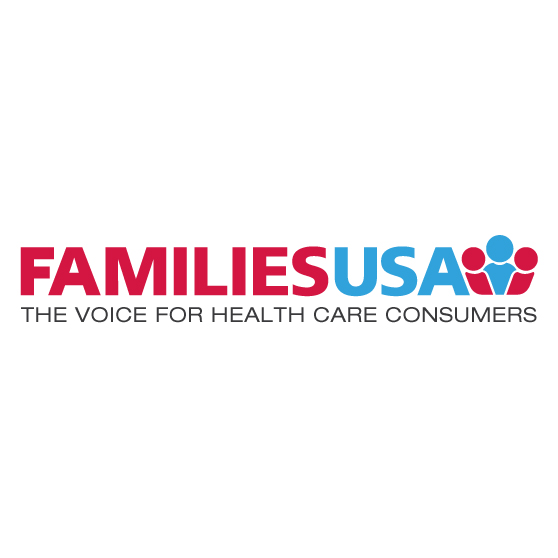Latest Senate Bill Still Strips Coverage and Drives Up Costs for Millions More
By Eliot Fishman, Dee Mahan, Lydia Mitts,
07.13.2017
Just as with the first two versions of the Senate health bill, the latest version would devastate insurance coverage, gut the Medicaid program and dramatically increase deductibles and out of pocket costs. The new version leaves in place the following components:
- Ending the Medicaid expansion, ensuring that millions of low-income workers will lose health coverage.
- Cutting Medicaid for all states by capping and cutting federal spending and passing significant costs on to states, essentially ensuring that they will cut their programs.
- Allowing states to eliminate the essential health benefits and minimum coverage requirements that are core protections for people with pre-existing conditions.
- Cutting financial assistance for private coverage and eliminate all assistance with out-of-pocket costs like deductibles. Under this bill, working lower and middle income families across all ages will see their deductibles increase by an average of close to $5,000. Older people will also see their premiums increase by hundreds to thousands of dollars on top of this.
- Instituting an age tax on premiums, allowing insurers to charge older people five times the premium of younger people.
- Providing billions of dollars in tax cuts to the wealthy and corporations.
Senate leadership has made six key changes, which we detail below, but they do little to mitigate the profound problems in the bill and in key ways make those problems worse.
Change 1: Adopts the Cruz Death Spiral Amendment, and Incentivizes Insurers to Participate
The revised bill includes a new provision, often referred to as the Cruz amendment, that would allow insurers to sell plans off the exchange that don’t follow numerous protections for people with pre-existing conditions. Insurers could sell plans that refuse to cover people with pre-existing conditions, charge higher premiums to people with pre-existing conditions, include blanket exclusions of all care tied to a pre-existing condition, or that don’t cover critical essential health benefits or preventive services with no cost-sharing. People could not use premium tax credits towards these plans and this coverage would not be considered creditable coverage, meaning people in these plans would have to wait 6 months before enrolling in exchange coverage.
These insurers would be required to offer plans on the exchange that adhere to all consumer protections. However, in practice, this amendment would decimate these protections for everyone in the protected exchange market by increasing the premiums for comprehensive coverage drastically. The health insurance industry has spoken out forcefully against this construct, confirming that creating a market where insurers can play by two sets of rules is a bad idea that would “undermine pre-existing condition protections, increase premiums, and destabilize the market.”
The amendment would add $70 billion over 7 years to the bill’s amorphous “stability fund” (called the Long Term State Stability and Innovation Program) that would go directly to insurers that took up this option. This is effectively giving a pay out to insurers that opt to engage in such destabilizing and discriminatory practices. Moreover, $10 billion per year is woefully inadequate to fix the devastating
destabilizing effects such a policy would have on states’ individual and small group markets affecting tens of millions of people.
Change 2: Trades almost $800 billion in Medicaid cuts for $45 billion in grants for substance use services.
The revised bill would offer $45 billion in federal grants to states for substance use services over nine years, supposedly as a way to offset the $772 billion cut to Medicaid.
This amount is no substitute for the comprehensive health coverage that over 20 million people would lose under the bill. Even the scholar whose work was apparently the genesis of the $45 billion number, has written that this amount is woefully short of what’s needed. More broadly, it would be terrible policy to cut back on insurance coverage and make up for it with program grants: grants to states are no substitute for actual insurance coverage.
Related: Health Affairs: In Senate Health Care Bill, A Few Hidden Surprises
Change 3: On top of massive cuts to Medicaid, shifts Medicaid dollars into block grants
The new version of the Senate bill retains the unconscionable Medicaid cuts in previous versions, estimated by the CBO to be a cut that grows to 35% of the program over time. The new version further shifts Medicaid dollars from a federally defined insurance program into a poorly defined block grant to states. The hastily written and poorly defined block grant provision in the previous version of the bill is expanded dramatically to include all non-disabled adults.
The bill now combines ending the Medicaid expansion, block grants instead of insurance for Medicaid-enrolled adults, and a 35% cut for everyone left in traditional Medicaid.
Change 4: Undoing a minority of the bill’s tax cuts for the wealthy and corporations.
The revised bill keeps two of the taxes in the ACA that pay for its coverage expansions that had been cut in the initial version: a tax on investment income and a payroll tax that helps finance Medicare.
Keeping these taxes is not nearly enough to compensate for the hundreds of billions in cuts to health coverage programs that largely benefit middle- and lower-income people.
The newest Senate bill is still very much a bill about cutting taxes. The bill still includes over $470 billion in tax cuts, mostly benefiting large corporations and health care businesses. And, as described below, it adds a significant expansion of the Health Savings Account tax benefit which predominantly accrues to wealthy households.
Change 5: Expands eligibility for catastrophic coverage, a preview of the plans people will be stuck with once financial assistance is cut
The Affordable Care Act included an option for young adults to purchase relatively skimpy catastrophic coverage with deductibles over $7,000 on the exchanges. The revised bill expands eligibility for catastrophic health plans to everyone and allows premium tax credits to be put toward these plans starting in 2020. The logic of this change is telling: because the Senate bill shifts the entire individual market toward much higher deductibles, broadening eligibility for the young adult catastrophic plans is a quick way to execute the longer-term shift toward inadequate, high-deductible coverage that people will be forced into once this bill’s cuts to financial assistance take full effect in 2020.
This is because by 2020 this bill will tie all marketplace financial assistance to plans very similar to catastrophic plans sold to young adults today. The Senate bill would peg premium tax credits to plans that come with only a 58 percent actuarial value and will end federal cost-sharing reduction support. This means that millions of working families will be left only able to afford coverage with deductibles upwards of $6,000-$7,000.
This amendment is in large part an admission that catastrophic plans are the only type of coverage that will be made affordable to working families under this bill and accelerates its efforts to push a greater share of health care costs onto working families.
Change 6: Expands use of health savings accounts, doing nothing to actually bring down costs for working families
The revised bill broadens the uses of Health Savings Accounts, allowing people to use funds from such account to pay premiums on a pre-tax basis (although such funds could not go towards plans that cover abortion), or to pay for care for adult children younger than 27. To be clear: this change will only benefit the wealthy and does absolutely nothing to help the working families who will be forced to pay higher premiums and out-of-pocket costs under this bill.
Marketing the Senate bill as a way to make coverage more affordable is wildly out of touch with the economic situation of households living pay check to pay check. This bill still guts financial assistance for private coverage and forces millions of families into plans with drastically higher deductibles. Families need adequate assistance to make the cost of coverage and care affordable. Health Savings Accounts only benefit the wealthy who can afford to put thousands of dollars aside in a tax-sheltered account.
This bill would still be disastrous for American health care
These changes largely make the profound problems in previous versions of the Senate bill worse. They will formally divide the market for individual health insurance into plans for people with pre-existing conditions and for healthier people. They offset huge cuts to Medicaid and the regulated individual health insurance market with small expansions in Medicaid block grants and substance use grants and a stabilization fund that goes direct to insurance companies.




